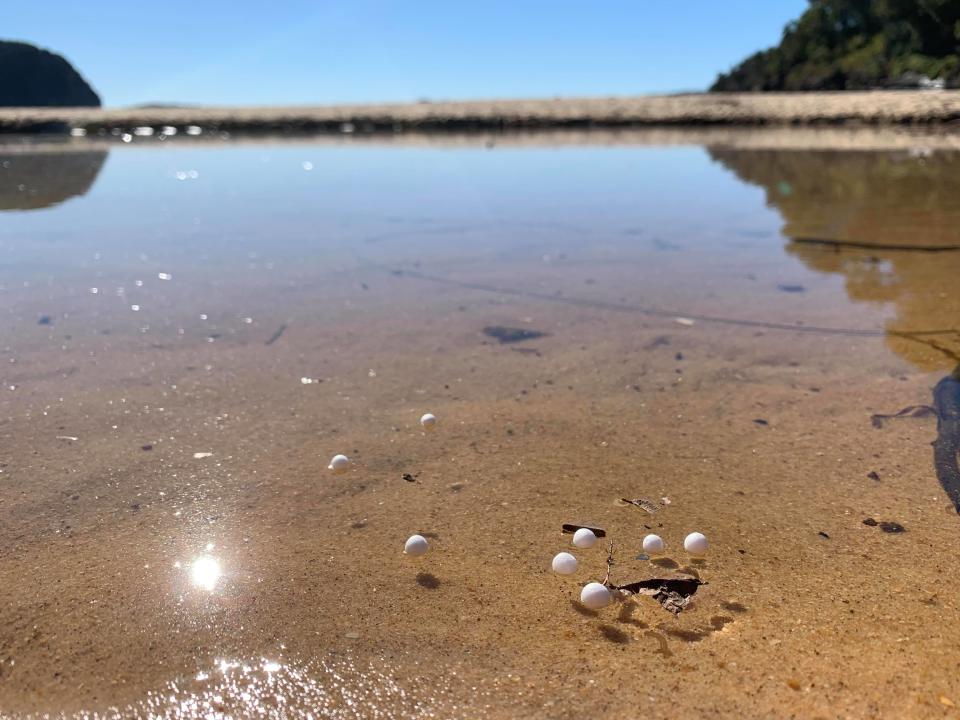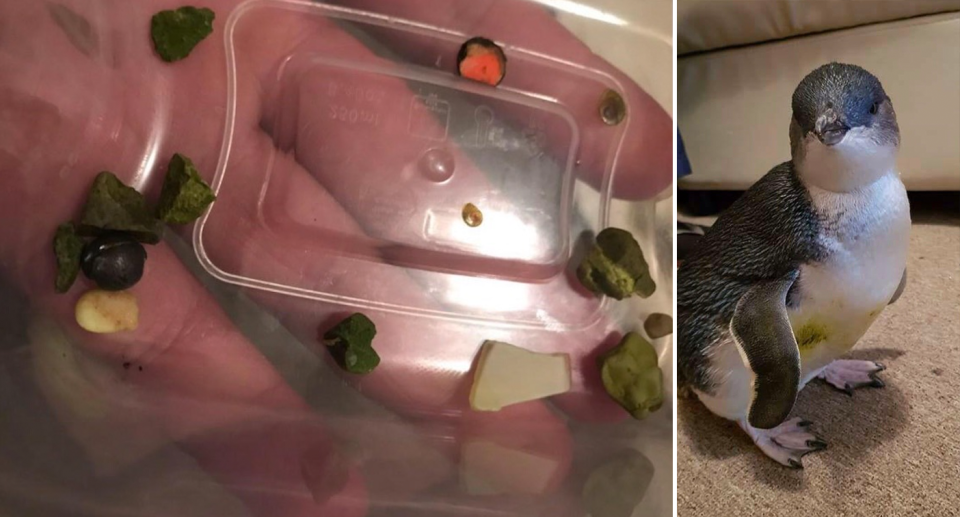Dumped furniture on the brink of causing environmental disaster at NSW beach
A “rat-eaten” beanbag dumped in front of a house has split open, spilling its toxic contents into a pristine waterway.
Hundreds of thousands of tiny polystyrene beans have rolled across the street and onto Pearl Beach, 90km north of Sydney.
Bags of squishy white beans are available at major stores like Kmart and Spotlight for around $10, but if not properly contained they can wreak havoc on the environment and be eaten by birds and marine life.

Builder Kane Harrison was working on a Gem Road house when he saw the beans blowing across the nature strip.
“When I saw the beads I was just like what the heck is going on here,” he told Yahoo News Australia.
“If I’m really honest people dump things next to construction sites all the time.
“The person who dumps a beanbag on the side of the road just doesn’t care.”
Desperate to stop the beans reaching the water, Mr Harrison sent one of his labourers out with a vacuum to clean up the area, but the task was “impossible.”

“It was a bit of a nightmare to be honest,” he said.
After five hours trying to suck them up, the builder had barely made an impact on the mess.
He watched the Central Coast Council also try and clean up the area, but despite their efforts thousands of tiny balls remain.
“Apart from picking up each single bead how do you do it?” Mr Kane said.
Polystyrene balls indirectly consumed by humans
Australian Microplastic Assessment Project program director Dr Michelle Blewitt describes polystyrene balls as a particularly “horrific” type of plastic
Due to the lightness of expanded polystyrene foam (EPS) the balls can travel across the globe via wind and ocean currents.
“Not only that, but when they get out there they break up into smaller pieces,” she told Yahoo News Australia.

Compared to other types of plastics, EPS has a high hazard rating, meaning the chemical components are quickly absorbed into both water and sea creatures.
Once in the ocean the balls will be mistaken by fish for food and humans will then indirectly consume the plastic.
“All of those chemical components leach into the flesh, potentially giving us a dose of the chemicals as well,” she explained.
Saul Deane, Sustainability Campaigner for Total Environment Centre, told Yahoo News Australia that all plastics “mimic” some sort of aquatic life.
“So, plastic bags mimic jellyfish and get eaten by birds and whales, straws mimic sea grass and get eaten by turtles, and plastic bottle caps and rings get caught around the necks of birds and fish,” he said.
Seabird rescuers brace for tragedy.
Larissa Johnston, spokesperson for Seabird Rescue Central Coast told Yahoo News Australia that the spill at Pearl Beach means they will be on alert across the entire region.
“We’ll be on the lookout not just for sea life across the Central Coast, but also sea eagles and osprey and turtles,” she said.
She believes the biggest tragedy is that seabirds will mistake the polystyrene balls for food and feed them to their young.
“(The chicks) will then be unable to take flight and die of malnutrition,” she said.

Ms Johnston explained that in 1960 less than five per cent of all seabirds had plastic in their systems, by 1980 the numbers rose to about 80%, and now the latest estimates suggest that by 2050, the figure will be 99 per cent.
At the time of writing, thousands of polystyrene balls remain at the edge of the beach.
Central Coast Council has been contacted for comment.



